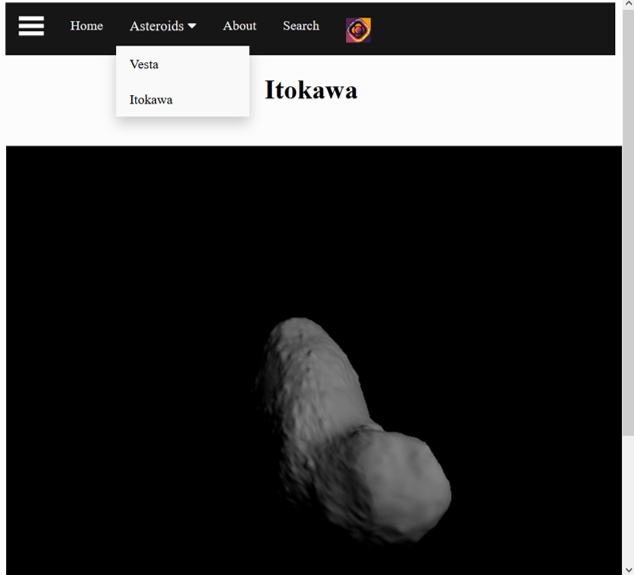3D Asteroid Viewer – Tempe
institution
Arizona State University (Tempe Campus)
Class
Iron Class (2018 – 2019)
Student TEAM
John Assaf, Computer Science
Ryan Edwards, Computer Science
Hoang Le, Computer Science
Billy Llamas, Informatics
Sadie Ogle, Informatics
Kairavi Shah, Informatics
Jessica Wallace, Engineering Management
Scientific & Technical Guidance
Dr. Daniel Wenkert, NASA Jet Propulsion Laboratory
Academic Guidance
Dr. Daniel McCarville, Professor of Practice, ASU School of Computing, Informatics, and Decision Systems Engineering
Dr. Ryan Meuth, Lecturer, ASU School of Computing, Informatics, and Decision Systems Engineering
Yiting Yao, ASU (PhD Student in Computer Science)
Dr. Ming Zhao, Associate Professor, ASU School of Computing, Informatics, and Decision Systems Engineering
PROJECT DESCRIPTION
A web browser-based application with the ability to rotate and zoom on an arbitrary-shaped body (in other words, something like an asteroid, which is not necessarily round like a planet) in a normal web browser. Although we do not yet have data for Psyche, there is ample data, including shape models, for other main belt asteroids, which can be used in developing the viewer. Future work on this project will indicate all the places on the model where space-based data have been collected and present the data.


